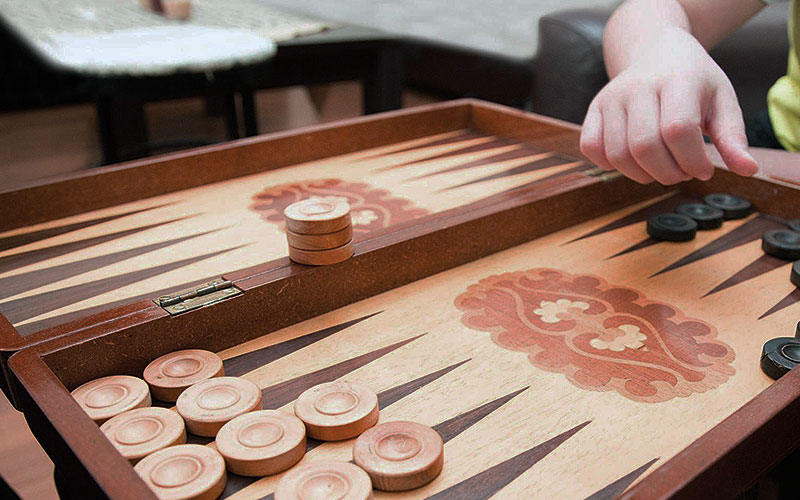
This post caters to backgammon beginners, delving into the movement of checkers—a fundamental aspect for potential players. For more details on backgammon rules, follow the link.
Starting a Backgammon Game
After the board setup, each player initiates the game by rolling a single die. Ideally done with a dice cup to prevent manipulation, this roll decides the starting player and the specific numbers in play. In case of a tie, players reroll until they get differing numbers.
The winner of the roll moves their checkers based on the dice value (e.g., a 6-3 roll moves a player one's checkers). Subsequent turns involve rolling two dice each.
Roll of the Dice
Dice value determines the points a player can move their checkers, always advancing forward to lower-numbered points.
Rules for Moving
Open Points
Checkers can only move to open points, not occupied by two or more opponent checkers. A point with a single opposing checker is a blot, considered open. If an opposing checker lands on a blot, it's a "hit," placed on the bar. No limit exists for landing on a point already occupied by one's checker.
Two Dice
Each die's value represents a move. For example, rolling 4 and 2 allows moving one checker four spaces and another two spaces. Combining values is possible if each move could be performed separately.
Doubles
Rolling doubles allows playing moves twice. Rolling 4-4, for instance, enables moving checkers a total of 16 times, distributed as desired.
Legal Moves
Players must use both values of a roll following the outlined rules. Rolling a double requires playing all four numbers. In case of a single number, players use the playable one and move the other. If either number can be played, the highest value should be chosen. Failure to play results in forfeiting the turn.
Bearing Off
When all checkers are on the home board, players can start bearing off. Rolling corresponds to points on the board, removing checkers. For instance, rolling a 5 allows bearing off from the five-point.
If no corresponding checker exists, the roll is used for a move with a high-numbered point checker. If none are in play, bear off from the highest occupied point. Players don't have to bear off if a legal move is possible.
To bear off, all active checkers must be on the home board. If a checker is hit during bearing off, it goes to the bar, requiring re-entry before bearing off again. The first to bear off all 15 checkers wins.